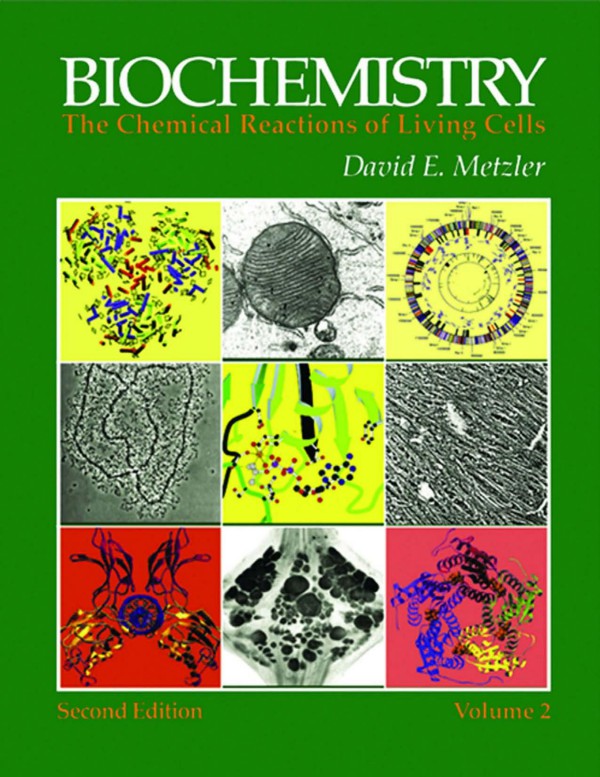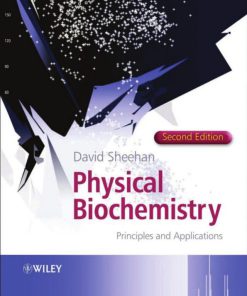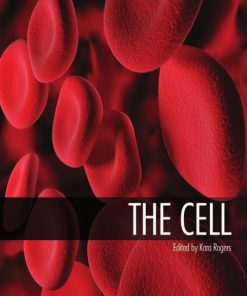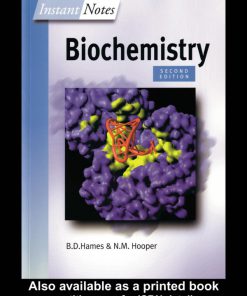Biochemistry: The Chemical Reactions of Living Cells 2nd Edition by David Metzler ISBN 0124925413 9780124925410
$50.00 Original price was: $50.00.$25.00Current price is: $25.00.
Authors:David E. Metzler , Series:Biochemistry [46] , Tags:Science; Life Sciences; Biochemistry , Author sort:Metzler, David E. , Languages:Languages:eng , Published:Published:Dec 2003 , Publisher:Elsevier , Comments:Comments:The most comprehensive textbook/reference ever to cover the chemical basis of life, the Green Bible of Biochemistry has been a well-respected contribution to the field for more than twenty years. The complex structures that make up cells are described in detail, along with the forces that hold them together, and the chemical reactions that allow for recognition, signaling and movement. There is ample information on the human body, its genome, and the action of muscles, eyes, and the brain. The complete set deals with the natural world, treating the metabolism of bacteria, toxins, antibiotics, specialized compounds made by plants, photosynthesis, luminescence of fireflies, among many other topics. * The most comprehensive biochemistry text reference available on the market* Organized into two volumes, comprising 32 chapters and containing the latest research in the field* Biological content is emphasized: for example, macromolecular structures and enzyme action are discussed
Biochemistry: The Chemical Reactions of Living Cells 2nd Edition by David E. Metzler – Ebook PDF Instant Download/Delivery. 0124925413, 978-0124925410
Full download Biochemistry: The Chemical Reactions of Living Cells 2nd Edition after payment
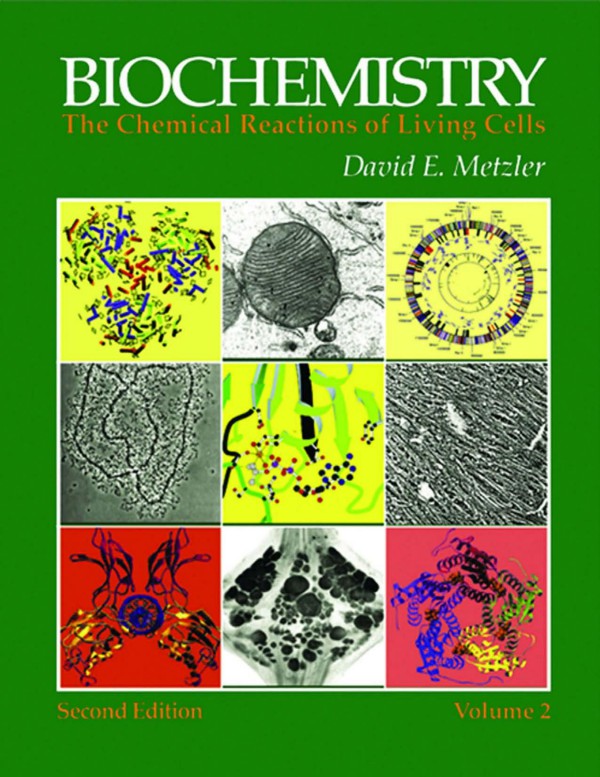
Product details:
ISBN 10: 0124925413
ISBN 13: 978-0124925410
Author: David E. Metzler
Biochemistry: The Chemical Reactions of Living Cells is a well-integrated, up-to-date reference for basic chemistry and underlying biological phenomena. Biochemistry is a comprehensive account of the chemical basis of life, describing the amazingly complex structures of the compounds that make up cells, the forces that hold them together, and the chemical reactions that allow for recognition, signaling, and movement. This book contains information on the human body, its genome, and the action of muscles, eyes, and the brain.
* Thousands of literature references provide introduction to current research as well as historical background
* Contains twice the number of chapters of the first edition
* Each chapter contains boxes of information on topics of general interest
Biochemistry: The Chemical Reactions of Living Cells 2nd Table of contents:
Chapter 1: The Scene of Action
- A. The Simplest Living Things: Examines the fundamental organisms that represent the simplest forms of life, providing insights into basic cellular structures and functions.
- B. Eukaryotic Cells: Discusses the complexity of eukaryotic cells, their structures, and organelles like the nucleus, mitochondria, and endoplasmic reticulum.
- C. The Evolution of Complex Organisms: Describes how simple organisms evolved into more complex life forms, emphasizing the role of bioenergetics in evolutionary biology.
- D. The Kingdom Protista: Focuses on the diverse group of eukaryotic organisms within the kingdom Protista, highlighting their unique energy processes.
- E. Multicellular Organisms: Discusses the coordination of energy use in multicellular organisms, including the role of cell signaling and metabolism.
- F. The Regulation of Cell Chemistry: Explores how cells regulate metabolic processes to maintain homeostasis and respond to environmental changes.
- References & Study Questions: List of sources and questions for review.
Chapter 2: The Molecules from Which We are Made
- A. Structural Principles for Small Molecules: Introduces the basic principles of molecular structure, including bonding and interactions.
- B. The Proteins: Focuses on the structure and function of proteins, including enzymes, hormones, and receptors.
- C. Sugars and Polysaccharides: Describes the chemistry of sugars and polysaccharides and their role in cellular energy storage.
- D. Nucleic Acids: Discusses DNA and RNA structure, function, and their roles in genetic information storage and transfer.
- E. The Lipids: Covers the structure and biological significance of lipids, including membrane formation and energy storage.
- F. Some Important Small Molecules and Ions: Examines key small molecules and ions critical to cellular functions.
- G. The Chemical Composition of Cells: Describes the chemical makeup of cells and how molecules interact in biological systems.
- H. How We Have Learned the Structures: Explores the methods used to determine molecular structures, such as X-ray crystallography and NMR spectroscopy.
- References & Study Questions: Additional resources and questions for review.
Chapter 3: Energetics of Biochemical Reactions
- A. Thermodynamics: Introduction to thermodynamics principles, especially in the context of biochemical reactions.
- B. Tables of ΔG° Values for Biochemical Compounds: Discusses the standard free energy changes for various biochemical reactions.
- C. Electrode Potentials and Free Energy Changes for Oxidation–Reduction Reactions: Focuses on redox reactions and their relationship to energy production in cells.
- D. Thermodynamics and Life Processes: Applies thermodynamic principles to explain biological energy transformations.
- E. Linear Free Energy Relationships: Explores how free energy changes can predict the behavior of biochemical reactions.
- References & Study Questions: Further reading and questions.
Chapter 4: How Molecules Stick Together
- A. Principle of Complementarity: Discusses the concept that molecules can interact based on their complementary shapes and charges.
- B. Forces Acting between Molecules: Describes the various forces (hydrogen bonds, van der Waals forces, etc.) that contribute to molecular interactions.
- C. The Quantitative Measurement of Binding: Focuses on methods for measuring molecular binding affinity.
- D. How Macromolecules Pack Together: Explores how large biological molecules (e.g., proteins, nucleic acids) interact and organize.
- E. Cooperative Changes in Conformation: Examines how conformational changes in macromolecules can influence their function.
- F. Muscle: Discusses the molecular mechanisms of muscle contraction, including protein interactions.
- G. Self-Assembly of Macromolecular Structures: Describes the process by which macromolecules spontaneously form functional structures.
- References & Study Questions: Additional resources and review questions.
Chapter 5: Membranes and Cell Coats
- A. The Structure of Membranes: Introduces the lipid bilayer structure of biological membranes and its properties.
- B. Membrane Metabolism and Function: Discusses how membranes participate in cellular processes such as transport, signaling, and energy conversion.
- C. Cell Surface Antigens and Receptors: Describes the role of membrane proteins in cell recognition and communication.
- D. Structure of Bacterial Cell Walls: Focuses on the unique cell wall structures found in bacteria.
- E. Plant Cell Walls: Discusses the structure and function of plant cell walls.
- References & Study Questions: Further reading and questions.
Chapter 6: Enzymes: The Protein Catalysts of Cells
- A. Primer on Enzyme Kinetics: Introduction to the kinetics of enzyme catalysis, including reaction rates and enzyme-substrate interactions.
- B. Inhibition and Activation of Enzymes: Describes how enzymes can be regulated through inhibitors and activators.
- C. Growth Rates of Cells: Discusses how enzyme activity relates to cellular growth and division.
- D. Specificity of Enzymatic Action: Explores how enzymes selectively catalyze reactions based on substrate specificity.
- E. Mechanisms of Catalysis: Focuses on how enzymes facilitate biochemical reactions, including mechanisms like covalent catalysis and acid-base catalysis.
- F. The Regulation of Enzymatic Activity: Describes how enzymes are regulated to ensure efficient metabolism.
- G. Classification of Enzymes: Provides an overview of the different enzyme classes and their roles.
- References & Study Questions: Resources and questions for further review.
Chapter 7: The Kinds of Reactions Catalyzed by Enzymes
- A. A Preview of Some Metabolic Pathways: Introduction to the metabolic pathways that enzymes facilitate.
- B. Classifying Enzymatic Reactions: Overview of different enzymatic reaction types and mechanisms.
- C. Nucleophilic Displacement Reactions (Reaction Type 1): Describes nucleophilic substitution reactions catalyzed by enzymes.
- D. Displacement Reactions on Carbonyl Groups: Focus on reactions involving carbonyl groups.
- E. Displacement on a Phosphorus Atom: Discusses reactions where phosphorous is involved.
- F. Multiple Displacement Reactions and the Coupling of ATP Cleavage to Endergonic Processes: Explores complex enzymatic reactions and energy coupling.
- G. Transfer of Sulfate: Describes sulfur transfer reactions in metabolism.
- H. Addition and Elimination Reactions: Focuses on reactions involving the addition or removal of chemical groups.
- I. Enolic Intermediates in Isomerization Reactions: Examines isomerization reactions involving enolic intermediates.
- J. Beta Cleavage and Condensation: Describes cleavage and condensation reactions catalyzed by enzymes.
- K. Some Isomerization and Rearrangement Reactions: Focuses on isomerization and molecular rearrangement reactions.
- References & Study Questions: Further reading and questions for review.
People also search for Biochemistry: The Chemical Reactions of Living Cells 2nd:
biochemical reaction equation
what is biochemical reaction
how does biochemistry relate to chemistry
a biochemist studies chemical processes in cells
a chemical reaction catalyzed by an enzyme requires
You may also like…
eBook PDF
Nutritional Biochemistry of the Vitamins 2nd Edition by David Bender 052112221X 978-0521122214

